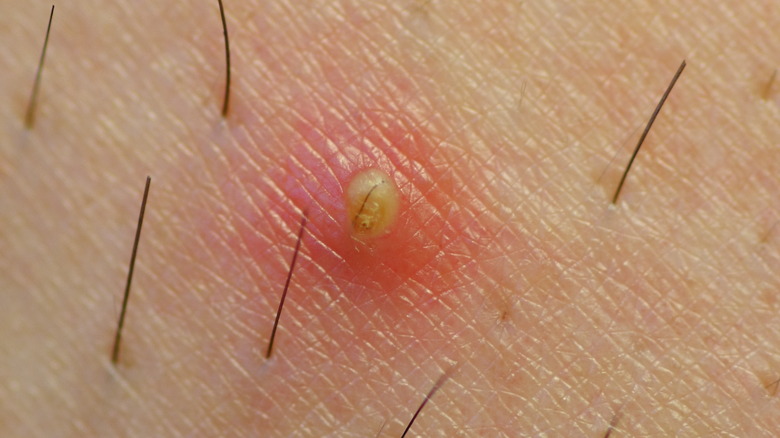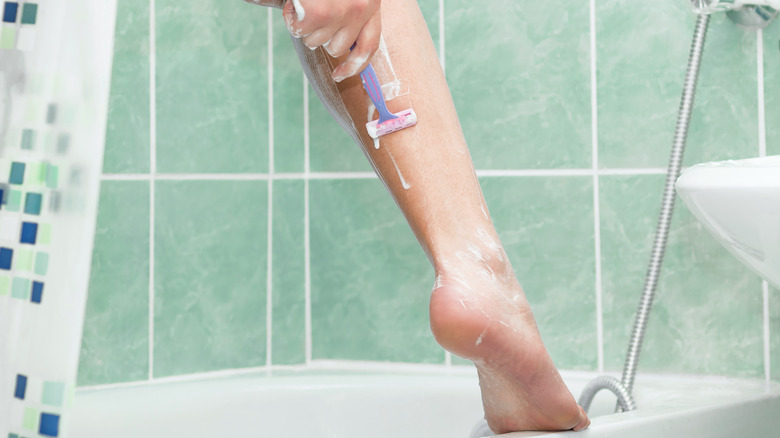The Best Way To Get Rid Of Ingrown Hairs
Ingrown hairs are one of life's relatively small, but hugely irritating problems. If you've had ingrown hairs before, you're well acquainted with the bumpy, itchy, red, hard-to-ignore spot on your skin — but what's the best way to get rid of ingrown hairs quickly?
An ingrown hair forms when a hair grows in the wrong direction. Instead of growing outwards, the hair gets stuck behind a clogged pore and grows back into the skin. Ingrown hairs usually occur in the areas where regular hair removal is common — the face and neck, armpits, legs, and bikini line. Shaving, tweezing, and waxing hair all increase the chances of developing ingrown hairs, which usually look like small, red, inflamed bumps (via the Mayo Clinic).
There are several easy ways to get rid of ingrown hairs. First, it's important to realize that even if you do nothing, the problem will likely resolve itself over time. But for most of us, just letting it be isn't a realistic option.
Ingrown hairs usually happen where hair removal is common
Before doing anything, it's important to make sure that what you're looking at is actually an ingrown hair. "The location will help indicate what type of bump you're dealing with," dermatologist Dr. Geeta Yadav told The Cut. "If it's in an area that you frequently shave, wax, or otherwise depilate, it's more likely to be an ingrown hair than a traditional pimple."
Once you're sure you actually have an ingrown hair, exfoliation is key to removal. Using a soft-bristled toothbrush or a washcloth, wash around the affected spot in a circular motion to help release the hair (via Dr. Axe). Other exfoliating treatments, whether acid, sugar, or salt-based, can also help soften skin and loosen the hair.
If exfoliating alone doesn't work, it might be possible to remove the hair using sterile tweezers. Since a tiny incision has to be made in the skin to reach the hair, this procedure carries the risk of infection. "Just like you might with a deep or painful pimple, use a warm compress to help soften the skin and bring the infection closer to the surface," Dr. Yadav continued. "Then cleanse the area and use a sterile pointed tweezer to carefully expose the hair and remove it. Afterward, cleanse again, apply an antibacterial ointment, and leave the bump alone as it heals."


